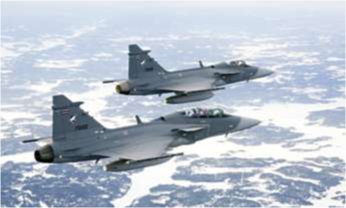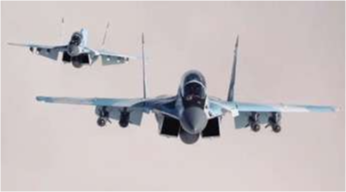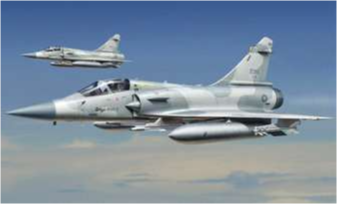Stemming The Slide. The IAFs Depleted Strength: Causes And Remedies

Air Marshal Harish Masand on STEMMING THE SLIDE
The IAFs depleted strength : causes and remedies
Despite its creditable performance in recent exercises like Gagan Shakti and the Air Power Display at Pokhran, followed swiftly by actual operations over Balakot and its aftermath on 26 and 27 February (see Vayu Issues II and III/2019) the Indian Air Force today is undoubtedly facing a severe crisis in terms of its depleted combat strength. Against its sanctioned strength of 42 combat squadrons, it is progressively and effectively down to about 30 squadrons while the security challenges facing the nation and its first responder, the IAF, have only continued to grow. Modernisation of the Chinese military including its air force (PLAAF) and the navy (PLAN) along with growing strength and modernisation of the Pakistan Air Force (PAF) albeit with Chinese support, have made the threat of a two front confrontation, even if not a full-scale war, (delete for) a realistic possibility for India. As a matter of fact, with rapid growth and unprecedented modernisation of the PLAN, there is distinct possibility that a hostile situation could easily confront the IAF with concurrent threats on three fronts, the third being in the maritime domain with increasing presence of PLAN in the Indian Ocean.
Salad Days
The IAF last saw major expansion and modernisation during the two decades following the 1971 war with induction of the Jaguar, MiG-21 M/Bis, MiG-23BN & MFs, MiG-27, Mirage 2000 and MiG-29s during the 1980s bringing it close to its sanctioned strength of 42 combat squadrons. Because of this, since the 1970-80s, the IAF enjoyed at least a modicum of technological superiority over its potential adversaries, including China, which could deter them, thus maintaining an overall semblance of peace and stability in the region, minor skirmishes and stand-offs on the ground notwithstanding.
This edge has now been lost with modernisation of the PLAAF, PAF and PLAN. Importantly, India has not been able to keep pace with the large numbers of 4th and 5th generation fighters along with supporting elements being inducted by China. Such lost deterrence, both in quantity as well as technology, would certainly embolden its two adversaries to, at the least, launch limited operations, perhaps concurrently, to test the IAF as well as gain their limited objectives.
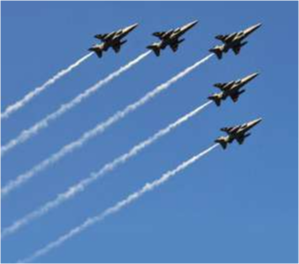
Jaguars over the Rajpath
Rude Awakening
The incursion by PAF fighters on 27 February 2019 following the Balakot attacks the previous day may be taken as an example of such attempts on a chosen front. That the IAF reportedly responded with just some 8 to 10 aircraft against a force of 24 PAF fighters may be indicative of the way it is thinly spread on all fronts.
Exercise Gagan Shakti of April 2018, reportedly had the IAF producing 11,000 sorties over three days over all fronts by rapidly switching forces west-to-north-to-east despite its depleted strength. However, such pre-planned exercises cannot be taken as the benchmark for likely responses in real-time concurrently on all fronts. There is no escaping the fact that a certain minimal numerical strength is essential to respond to contingencies on different fronts which revolves around the actual deployed force in that theatre. While some have argued that with increased multi-role capabilities of modern combat aircraft, one does not need the same larger numbers anymore, this argument is largely fallacious since it does not take into account the concurrent increased technological capabilities as well as numerical strength of the adversaries while also ignoring the impossibility of being physically available in reckonable numbers on all fronts at the same time, if the situation so warrants.
In the aftermath of the humiliating reverses at the hands of the Chinese in 1962, which none of us can forget, the Tata Committee had recommended a force level of 64 combat squadrons for the IAF. That level was never sanctioned or achieved largely due to budgetary constraints and the IAF instead directed to build up to a level of 45 squadrons. Some recent studies and papers have logically argued and projected a requirement of 50-60 combat squadrons for the IAF to meet foreseen challenges from both China and Pakistan. However, with the current budgetary levels for defence declining over the last decade and more, it would be difficult to reach the sanctioned strength of 42 combat squadrons in the near future, much less an aspirational figure of 50 to 60 squadrons.

MiG-21s at a forward base
Knee jerk acquisitions
Much has already been written on budgetary constraints and our dysfunctional procurement system. While these factors are perhaps largely responsible for this state of affairs, the IAF also needs to review some of the decisions it took or was, perhaps, forced into, over the years. Unless that is done, it cannot hope to draw the right lessons for the future. After all, as a professional service, it is the IAF alone who could advise and convince the political masters as well as the bureaucrats in the ministry on the kind of forces it needs and then try and stitch the coat within the cloth available, so to speak.
As some examples, when the PAF inducted the F-16 in 1981, the IAF did not really have to rush, or be politically pushed, into the knee-jerk purchase of two squadrons of MiG-23MFs, which in any case were really no match for the F-16s. There were no immediate prospects of a shooting war at that particular time and a rushed purchase of an entirely new type only squandered the budget available, apart from the problems of maintenance and logistics of a small fleet. Soon thereafter, the IAF identified the Mirage 2000 from France as the best available aircraft to counter the F-16s and signed a contract for two squadrons of these aircraft in 1982-83 with deliveries from 1985. The Mirage contract had an option clause for license manufacture of 150 more aircraft, to be exercised within about three years of delivery. Considering that everyone in the IAF swears by the Mirage 2000 even today and many wanted to buy more of these, even as the MMRCA in 2001, it was curious, though later understandable, when this option clause was not exercised.
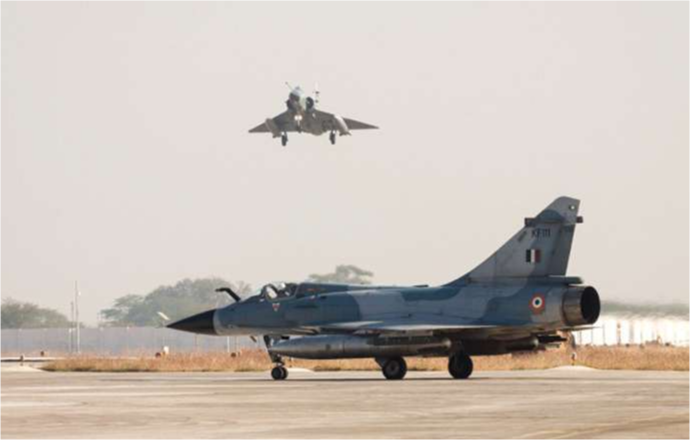
The Mirage 2000 has an outstanding record in IAF service
Soon after India signed the deal for the Mirage 2000, the Soviets offered us the yet unveiled MiG-29 Fulcrum, which was till then seen only in satellite pictures and given the codename RAM-M. The MiG-29 was certainly a better air superiority fighter and we soon opted for two squadrons of these as well, which were inducted in the IAF from 1987 followed by a third squadron in 1989. Though the MiG-29 was initially configured mainly for the air superiority role, considering the potential it had for upgrade to multi-role capability – and also because it was far cheaper in acquisition costs – it was understandable that the IAF opted for this aircraft, though it meant that yet another type was received in small numbers with consequential difficulties in maintenance and logistics. The MiG-29 contract, once again, had the option clause for license manufacture of 150 aircraft. However, the IAF failed to capitalise on this option and the MiG-29 was much maligned later, I feel incorrectly, for its maintainability.
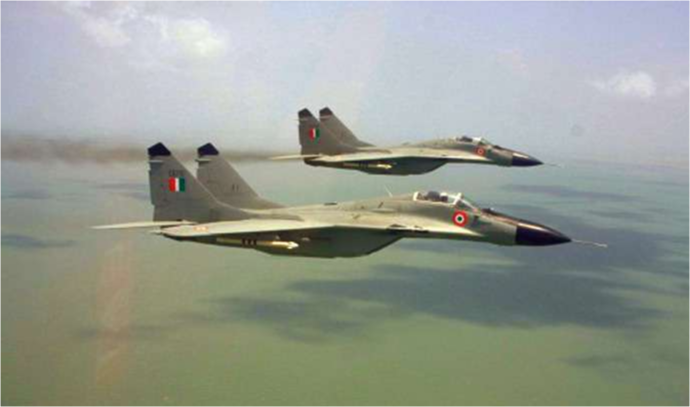
MiG-29s over the Gulf of Kutch
Maintaining the Force
While this would be the subject for a detailed analysis, it needs to be briefly stated here that, for some strange reason, the IAF did not look at the logistics and 3rd/4th line maintenance of this aircraft even as late as 1991 when it was being offered to us for a pittance compared to what we had spent for maintenance facilities for the two squadrons of Mirage 2000s. It took us another three years and close to twice the costs to procure the 3rd/4th line servicing facilities for the MiG-29 from Russia. By then, owing to rampant cannibalisation, we had literally ruined the existing aircraft and systems. Even as early as in mid-1988, as Commanding Officer of No.28 Sqn, I had brought to the notice of the inspecting C-in-C that while the Squadron was maintaining a serviceability of about 90% with 100% radar availability during the warranty period, I expected this to drop to 50% by end of the year. On being questioned, I had mentioned the state of spares citing the example of Block-02 of the radar of which we had procured just one for the two operating squadrons even without establishing 3rd line or I-level servicing facilities.
Considering the supply chain from the Soviet Union and the prevalent indenting system, that meant that we expected an MTBF of over 12,000 to 16,000 hours for the Block-02 since this one spare would have to last for 3-4 years of operations of the two squadrons before we got another spare. The spares state was similar for other systems and avionics too. In 1989-90, as the COO in Adampur, where we inducted the third squadron of MIG-29s, I had conducted a study on the MTBF of various systems with the active support of the STO of the Squadron, then Sqn Ldr SK Gupta, and found very good figures for the MTBF of all systems. The problem essentially was that the IAF those days did not look at MTBFs closely and did not base its logistics on the expected MTBF till we got to the MiG-21Bis Upgrade in 1993-96.
For the MiG-21bis Upgrade, every contract for the new systems had an MTBF-linked warranty and the initial spares package was based on MTBF figures multiplied by operational deployment requirements even with provision of I-level facilities for all planned bases. Unfortunately, even after introduction of such contractual provisions and operating methodology in the IAF through the Bis upgrade programme, we did not include this in many other procurement contracts till the draft DPP prepared in 2001 included MTBF-linked warranty as a mandatory requirement.
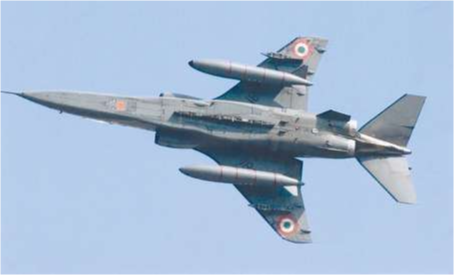
The Indian Air Force is the last air arm in the world to operate the Anglo-French Jaguar
which type will continue in service till the 2030s
Options not considered
In December 1993, as a Group Captain, I was put in charge of the MiG-21Bis upgrade programme, later known as the Bison, and was on the first visit to Russia to evaluate the Mikoyan proposal for the upgrade with then Air Commodore Phillip Rajkumar, the DASR, as team leader. During this visit, we were taken from Moscow to Nizhny Novgorod to the MiG factory for the day. While driving through the very long tarmac, we noticed a large number of cocooned aircraft which looked like the MiG-29s. So, I asked our escort through the interpreter what these were doing, all wrapped up. We were told that there were over a hundred undelivered MiG-29s after break-up of the Soviet Union. Since the Russians with us knew I was a MiG-29 pilot, having been so introduced to them by the Mikoyan Chief Designer Mr RA Belyakov, we were immediately offered all those aircraft at an unbelievable throwaway price of US$ 1 billion which amounted to less that $ 10 million per piece. I am certain that if we had followed up on this and negotiated this deal, we could have got those for even less and perhaps even upgraded them to multi-role capability along with the MiG-21bis, all around the one billion dollars! Also, if we had pursued this option, we may not have had to desperately look for MMRCAs in 2001.
It may be recalled that, at that time, the Russians needed funding badly and were selling leftover stocks at throwaway prices just to keep their own establishments running. It is perhaps the last 21 of these aircraft that we have recently heard about in the media as being purchased by us for around Rs 6000 Crore.
But back to that time in the 1990s, it was also reported that the Israelis and Chinese had picked up not only a large number of defence-related spares -some reports said full factory inventories – but the Chinese also employed a large number of Russian scientists and designers to work with their own defense industry, all at minimal prices at that time. However, we did not do any of that sort, leading to shortage of spares and maintenance issues later with our large Russian inventory even while we were forced to purchase Russian spares piece-meal from other firms through intermediaries at much higher costs. As I conveyed to some friends in late 1991 when the Su-27 was being displayed in Hindon for the first time in India, one buys stocks when the market has collapsed and everyone else is selling, especially when you have faith in long-term prospects and need to invest for the long-term.
The back ground to the MiG-29 offer was a visit by Mr Belyakov with his team to Poona in January 1988 where we had just inducted the MiG-29s. Mr Belyakov had asked us for our experience on the aircraft and what could be done to improve it. I had personally given a list of systems needed to be changed/upgraded including the need for a multimode radar, a more accurate inertial navigation system which is, in any case, essential for the multimode radar, EW systems and some changes in the airframe and engines to make the MiG-29 a “super fighter”. In Moscow, Mr Belyakov recalled all this while introducing us to his team and had told me of the work in this direction. Much of what we were trying to put in the MiG-21Bis could have easily been accommodated on the MiG-29 and given it a true multi-role capability. It would also have been more economical had we initiated the MiG-29 upgrade along with or soon after the MiG-21Bis, more so considering the larger numbers now involved and available even cheaper than we could have built them at. Unfortunately, we opted for yet another new type, the earlier rejected Su-27 (or its Su-30 variant) in mid-1994 and picked up just 10 MiG-29s as reserves in 1995 at about US$ 25 million a piece.

MiG-27ML comes in to land, wings swept forward
Russia’s LCA
Interestingly, during the same visit, while in Moscow, Air Commodore Philip Rajkumar and I were invited by the Chief Designer of Sukhoi, Mr Siminov. During this meeting, he showed us the design of a single-engine light-weight fighter in class of the LCA (the Su-54), the programme that we were pursuing indigenously, built around the R-25 engine already license produced by us for the MiG-21, and offered to build or help to build this type for us within a cost of US$ 5 million per aircraft. While we certainly did not want to abandon the indigenous LCA programme, the offer clearly indicated the opportunities around the LCA as well as other indigenous development programmes with Russian design help while containing costs. Unfortunately, we did not consider this option with any seriousness.
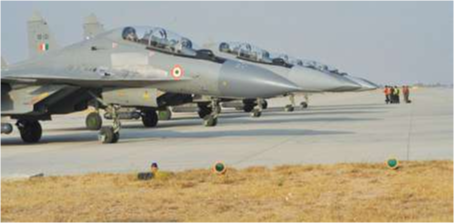
The Sukhoi Su-30MKI serves in larger number with the IAF today, and
more are expected to join the inventory
As for containing costs as professionals in the IAF, owing to obvious budgetary constraints, example of the Sukhoi Su-30 comes readily to mind. In this context, the previous Defence Minister, Ms Nirmala Sitharaman, had stated on the news channel Times Now on 13 December 2018 that the Su-30 built by HAL costs 45% more than that directly imported from Russia. As Director Projects, at Air HQ, I happened to be the Air Force representative in the negotiating committee for license production of 140 Su-30MKIs by HAL in November/December 2000, headed by then Additional Secretary in the MoD, Mr Dhirendra Singh. The bottom line taken by HAL in these negotiations was that the Su-30 produced by HAL should cost $ 1 million less than the Russian one, otherwise it did not make economic sense to licence-produce the aircraft. The costing of raw materials, other components, NRCs and even the larger initial man-hours of HAL were accordingly worked out and agreed to. All this should have been part of the license production contract signed by HAL. Despite this, it was surprising to see the above statement by no less than the Defence Minister. It also indicates that somehow HAL costs have run amuck over the years and the IAF has not been able to counter the reasons for these and contain the costs, thus adversely affecting the budget for other acquisitions. Some other examples of HAL costing have also been included in my earlier article What really Ails HAL.
Such unchecked costs and overruns, from all suppliers, public or private, obviously impact on the availability of funds for other urgently required systems in our capital acquisition programme.

The MiG-23U operational conversion trainer
The MMRCA Imbroglio
In late December 2000, I was appointed as the Director ASR for just about a year. Along with this assignment came chairmanship of the ASR committee, which, at that time, amongst other things, was formulating ASRs (or QRs) for the 126 MMRCA to meet urgent requirements for about six squadrons of combat aircraft owing to delays in the LCA programme. Considering the likely budget as also the operational requirements, we were working on a 20-ton class of aircraft, which would have shortlisted the Mirage 2000-5, the F-16, Saab Gripen and the upgraded MiG-29 to compete. All these aircraft were expected to cost within $ 50 million a piece as per available information. Therefore, the budgetary requirement was calculated to be $10 billion for the programme considering about $ 6.3 billion for the aircraft and the remaining for ground/test equipment, weapons, initial spares and maintenance facilities.
In about September/October 2001, the Ops Branch decided that instead of going through a global tender, they wanted more Mirage 2000s that had done so well in the Kargil operations of 1999. This proposal was however rejected by then Defence Minister, Jaswant Singh, who did not agree with a single-vendor situation for such a large purchase, as against a smaller number to cater for wastage and reserves, although he accepted the necessity for procurement of 126 aircraft. He directed that we formulate ASRs for the required aircraft and then start the acquisition process. Fortunately, we had almost finalised the ASRs by then and were ready to commence the process. For some reasons thereafter, the process got derailed and the RFP for the 126 MMRCA was issued many years later, in 2007 with new ASRs now also permitting 30-ton class aircraft to compete. The cost implications were obviously not revised and, as per information in public domain, the L-1’s bid for initial acquisition of 126 Rafale aircraft was around $ 28 billion in 2011. It was, perhaps, due to such high costs that the Rafale deal did not go through, amongst other reasons which have been reported from time to time. The essential point being made here is that, to fill the deficiency in combat squadrons, we, perhaps, did not consider if large numbers of such high cost aircraft would fit in our likely budgets and now find ourselves with a depleted combat force.
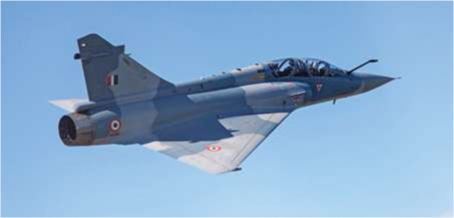
Two-seat Mirage 2000TH operational trainer
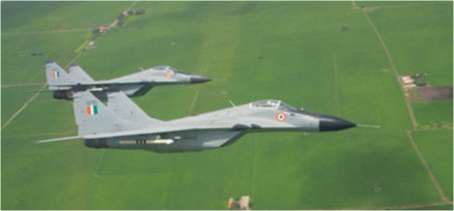
MiG-29s on combat air patrol
Cost effective approach
Having given some examples of the decisions which may have contributed to the current situation, essentially to draw some lessons for the future, let me suggest some of the steps that could now be taken to redress the deficiencies and make the IAF more potent, particularly with the force that is available. I intend to focus more on the in-house steps since the allocation of required funds and the entire procurement system are not in our control. Quite obviously, acquisition of the numbers required to bring the strength up to 42 combat squadrons, even while more types phase out, would not be possible even in more than a decade, considering the current budget as well as our dysfunctional procurement system. Therefore, while continuing to work towards larger budget allocations and expediting the procurement process, the IAF must find more cost-effective measures in-house to better utilise its available force in the intervening period.
The first obvious measure is to make efforts to improve availability of the existing force. A lot of reports in the public domain indicate poor serviceability and availability of some of our combat fleets, particularly the Su-30. While I am not privy to any inside information and the reasons for this state, I can only conjecture that, perhaps, the major reason for this state in front-line squadrons is that we have not captured the field MTBF of systems on the Su-30 despite years of operation of this type, the lack of an MTBF-linked warranty in acquisition of this aircraft already having been pointed out. Based on accurate capture of the field MTBF figures for all systems, the logistics of acquiring requisite number of spares to sustain the desired serviceability and availability could be put in place. While this may add to the revenue expenditure, it would still be more economical than outright acquisition of new aircraft and is possible within the available budgets. At the same time, measures should be initiated to harden the systems and improve the field MTBF of the systems.

Sukhoi’s LCA: the Su-54
Also, in systems where the MTBF-linked warranty is contracted for, we need to keep an accurate record of all servicing, failures and repairs as required in contractual clauses to be able to enforce the contractual terms on vendors for both repairs and maintenance of the systems as also further hardening and improvement of their field MTBF. Non-maintenance of such records for tabulation and verification generally results in the vendor finding an escape route from the contractual obligations.
Various types initially considered for meeting the IAF’s MMRCA requirement.
Clockwise from top left: the Saab Gripen; LM F-16; Dassault Mirage 2000; MiG-35
Perhaps (delete too) in this area, we may also look at the maintenance philosophy being followed to cut down the time taken for pre-flight inspections and to prevent burning the systems on ground. My experience with the initial daily servicing of the MiG-29s indicates that we may be over-testing the systems and burning them on the ground. As an example, the first squadron equipped with this aircraft in June 1987, followed the 8-trade system then prevailing in the IAF, and each tradesman tested the individual systems in the pre-flight testing thus prolonging the system testing on the ground, that too without air-conditioning. In my squadron, I implemented the Built-In Test (BIT) procedure based on the IRAN (Inspect And Repair as Necessary) concept right from the first day in October 1987 when we received our aircraft. This method required just 15 minutes for pre-flight inspection by the single L-tradesman while two M-tradesmen did the physical checks and replenishment.

More Sukhoi Su-30MKIs have been ordered from time to time
to make up continued depletion of IAF fighter strength
We implemented this system through then Flt Lt Shera and my STO Sqn Ldr Bharadwaj, with the AOC Air Cmde JP Singh’s permission. As a matter of fact, the technical publications even had an operational pre-flight system wherein only replenishment and arming was required with the BIT system indicating if there were any failures after starting engines. These procedures permitted faster turn-around and better availability of aircraft with maintenance only on an as required basis. On operational detachments, we even followed the latter system thus cutting down on the time and effort required to keep the aircraft flying. The problems of implementing such a system in the prevalent environment then make for another story for another time. Due to this, not only did we cut down on the testing time thus ensuring faster availability and better utilisation, our systems including radar did not easily fail and we had 100% serviceability of all systems till the aircraft went in for 2nd line servicing. Unfortunately, there I could not stop cannibalisation from our aircraft to service the other squadron’s aircraft lying unserviceable due to non-availability of spares mentioned earlier. Later, the AOC-in-C himself approved adoption of the FLM (Flight Line Mechanic) or crew chief system for the fleet cutting down on the manpower. Unfortunately, by then we had already burned a lot of systems with ad-hoc repairs adversely affecting the future reliability of the systems.

The two-seat Sukhoi Su-30MKI
Force Multipliers
The other step that we could take is to focus more on combat support systems including EW, ISR, AWACS and AAR aircraft, while pursuing acquisition of combat aircraft. These would act as force multipliers and increase potency of the available force. As just one example, with a much larger number of AWACS, we could significantly cut down on standing patrols by combat aircraft thus conserving their life as well improving the availability and utilisation in times of actual need. Quite obviously, this would help us bring a larger and more potent force to bear at the right time, and the chosen place, as if we had a couple of squadrons more on our strength. In any event, in the modern battlefield, to send an aircraft without AWACS cover, and an EW system, is like sending a blind lamb to the slaughterhouse. The cost of acquiring the requisite number of combat support systems would also be far less than the cost of the required number of additional combat aircraft and could be accommodated in the budget, admittedly at the cost of delaying the last combat squadron or two. Thus, while the IAF works towards building up the number of combat squadrons to the desired level within the allocated budgets over a decade or more, such force multipliers could be used to minimise the ill effects of the depleted strength through more effective utilisation.
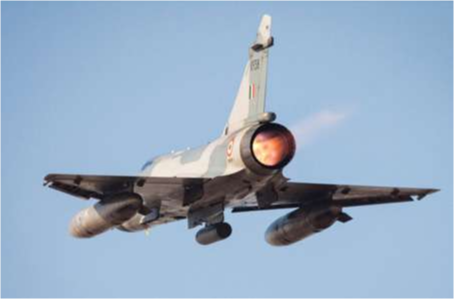
The Mirage 2000 remains the IAF’s front line multi-role combat aircraft
To be more conservative ?
Another measure that the IAF may consider is to pitch its operational requirements a shade more conservatively instead of looking for weapon systems which are known beforehand to be too expensive. The intent should be to acquire larger numbers initially at affordable costs on the lines of cutting the coat based on the available cloth. The recent experience of the aerial engagement post-Balakot may be taken as a pointer in this direction. One just needs to imagine the scenario if we had been able to launch 20 or even 10, of the low-cost MiG-21Bisons with a few more high-end Su-30s, MiG-29, and/or Mirage 2000s in a potent mix for the engagement on 27 February instead of just 4 or 6 MiG-21s (as reported by the media). My views on this engagement and the results are available in the article F-16 vs MiG-21bison Imbroglio : More Questions than Answers which appeared in Vayu Issue III/2019. Even the US is now working towards a mixed force with a large number of inexpensive expendable drones along with high-end fighters.
In this regard, (delete and) as well as some of the other remedial measures suggested here, the example of China might also be studied. While China is trying to compete with the US to assert its position, particularly in the western Pacific and Space in the initial stage, it is a well-known fact that Chinese military technology would take some time to come up to levels of the US in most fields. Despite this limitation, the Chinese are relentlessly pursuing larger numbers of affordable modern indigenous systems to try and swamp the forces and systems that the US could bring to bear in its area of interest in an effort to deter the US from interfering while the Chinese continue with creeping attainment of their objectives in what has been called the salami slicing strategy.
Considering that the MiG-21Bison is still an effective weapon system in numbers for at least some of our needs, based on our experience post-Balakot, is highly affordable and was license-manufactured by HAL, we may also consider finding ways and means to extend its life and product support somewhat longer to alleviate further progressive depletion of our combat strength. Product support for all the new avionics and systems, incorporated during the upgrade, should in any case be available since these have barely done 20 years of service so far. This may also help in progressively reducing the number of types that we have to maintain in our combat fleet thus reducing future cost of logistics and maintenance. Reducing the number of aircraft types we operate to the extent possible should also be our endeavor to cut down on the problems of logistics, maintenance and costs.
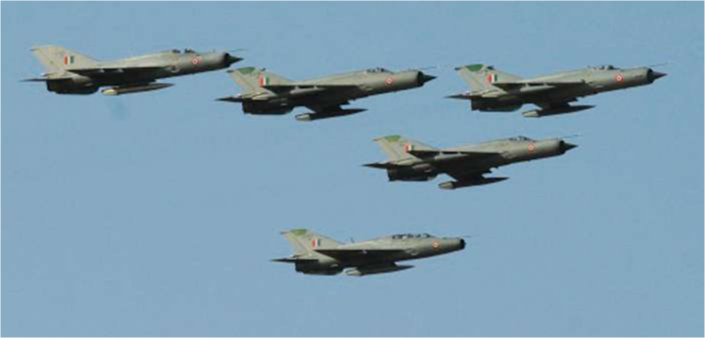
MiG-21 variants of the IAF: at their peak, over 20 squadrons of the IAF were equipped
with this type, or near fifty percent of the Force
Further, once the operational requirements are set, they should be frozen(delete, but) catering for the likely procurement and development time. Changes in operational requirements once the procurement process is initiated not only delays the process unnecessarily but could also result in eventual cancellation of the programme, with much funding and time wasted. I would quote just two examples to highlight the point.
In 2001, soon after I took over as DASR, I found a case for procurement of some LOROP (Long Range Oblique Photography) systems stuck in the ministry for over two years, even though acceptance of necessity had earlier been granted. Getting into details, I found that the case was stuck with MoD Finance, which was objecting to this acquisition on grounds of satellite imagery being made available in the near future. Through the DCAS, then Air Marshal TM Asthana, I pushed a long reasoned note to the Defence Secretary, then Mr Ajay Prasad, who called for a meeting with the FA(DS), as the post was then called. In this meeting, we technically convinced the FA(DS) on the need for a multitude of complementary reconnaissance systems instead of reliance on just one or two systems. As a matter of fact, in a diplomatic manner, I even made a point that if the Defence Secretary had accepted the necessity as the executive branch of MoD, the finance branch ought not to be questioning the necessity but confine itself to the budgetary and financial aspects. The file was cleared within two weeks as promised by the Defence Secretary. Unfortunately, thereafter, the Ops Branch changed its mind and now wanted a completely different system with different QRs resulting in a fresh case being initiated.

‘Air Warriers’ with the MiG-29UPG
The second example is of the MiG-21bis Upgrade programme. This was a comparatively shoestring budget programme having been cut down from the estimated $ 850 million to $ 626 million. Because of this, we had to look for “the best bang for the buck” while meeting the operational requirements as laid down by the Ops Branch. In this process, we had identified a Video Recording System (VRS) with a four-channel recording facility. At that time, we had the requirement only to record the HUD with outside view and the HDD with the airborne radar picture with the other two channels as spare for perhaps the EW system when carried and an electro-optical pod if integrated to the aircraft in its remaining life of about 20 years.
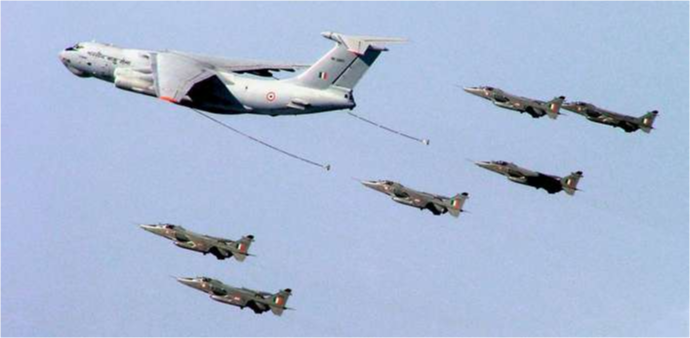
Force multiplication: Il-78MKI air-refueling Jaguars
The contracted VRS had a capability of recording 16 frames per second, which could be divided between the channels through a simple mechanical selection giving us 64 combinations. The system was also accordingly contracted for at very economical costs. Once the D&D work started in Russia in 1996, and I was still in Air HQ as the Director Aircraft Upgrade, our project team in Russia forwarded a requirement to modify the system with an electronic selection mechanism providing many thousand combinations. The vendor was obviously willing to provide a new electronic control system with additional costs and time. I strongly opposed the proposal since such large number of combinations was unnecessary and not truly usable. Fortunately, my immediate superior, the ACAS(Plans), AVM Sisodia, agreed with me and turned down the proposal. Nevertheless, time and effort were wasted and contributed to the confusion and, possibly, to overall delay in the D&D phase. The essential point being made here is that we need to have a firm and clear requirement and once the procurement has commenced or contracts signed, the requirements stipulated in the contracts cannot generally be changed without serious impact on costs and time.
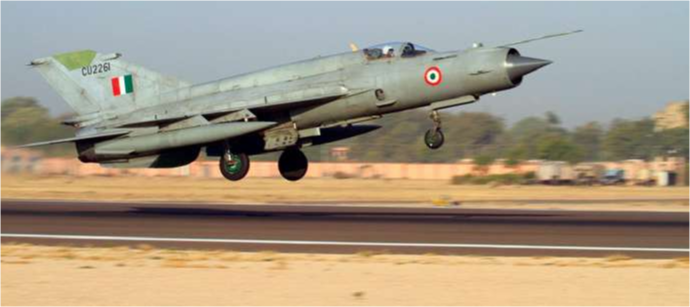
Upgraded MiG-21bison
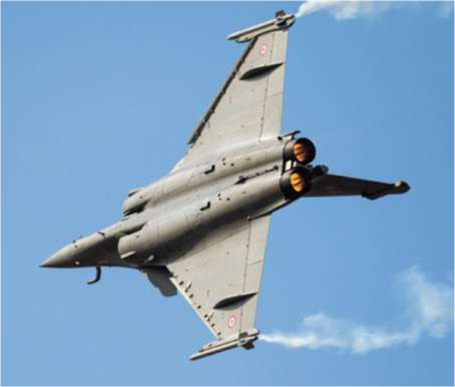
Shape of the future: Dassault Rafale
Complexities in contracts
Even after setting the firm operational requirements, it is important to have well trained people, with innovative mind-sets and approaches, to assess, benchmark and negotiate fair costs while expediting the planned acquisitions. Defense Acquisition, per se, is a complex process, covered as it is in layers of national security with(delete the) resultant lack of authentic published material, (delete the) limited number of manufacturers dealing with defence products in a narrow limited market and various national and international controls on sale of arms. It is certainly not an open or transparent market and the products themselves have become increasingly sophisticated and technologically complex of an increasingly proprietary nature. In such an environment, it is difficult to assess fair and reasonable costs as also to be able to negotiate the costs along with implementable contractual terms. In the IAF, in fact the armed forces and the ministry itself, personnel placed in the procurement field are generally without any formal training, previous exposure or even an assessed flair for such assignments.
My own induction in the MiG-21Bis upgrade programme in late 1993 was without any background in this complex area. Personally, having been in the operational field assignments till then, I was not even keen on getting into that job and was certainly not au fait with working of the Ministry. It was my own pupil, then Wing Commander N Motilal, who spared me a lot of time during the 15 days that we were together, before he left Air HQ, and gave me some good essential grounding. It was thanks to this and later my good fortune, that I did not fall on my face and was able to complete this programme, initially budgeted at US$ 850 million and later approved at $ 626 million, within $ 600 million with unprecedented contractual terms included like the MTBF-linked warranty, which have now become a standard part of the DPP. All this was achieved with a small team of just two other officers, Wg Cdr Rajesh Sethi and Sqn Ldr Mokashi, and two clerks, Corporals HK Sharma & Satyakumar Yedla. It is through their dedication and tireless work, on many occasions till 2 in the morning when I used to drop them home in my small Maruti, that we could finish the programme in the time and manner we did, charting out unprecedented contracts along the way. The point being made is that procurement results can be achieved despite the hurdles of processes and the bureaucracy, if one knows the objective and has a clear vision of the manner to get there. Formal training in this area is a definite necessity.
At the end of my tenure as Director Aircraft Upgrade in the latter half of 1996, I had suggested a capsule course for all the IAF personnel being inducted into procurement, including those from Maintenance and Logistics branches, so that they could start with a fair knowledge of the processes as well as nuances of defense acquisition to economise as well as expedite the process. Over time, I felt, the contents and utility of such initial training would progressively improve with the experience and inputs of future generations. However, as far as I know, apart from a few seminars at the IDSA and some visits to the Defense Acquisition University in the USA and such establishments in other countries in this intervening period, the system of such in-house training has not been implemented. If it has been, the IAF could relook at the contents of such training to further improve its own procurement system and processes. Such training would certainly help in expediting decision making at various levels, particularly if there are no personal interests in the procurement.
Towards this effort, one may also wish to see the paper on “Challenges of Commercial Evaluation” at an international seminar on defense acquisition organised by IDSA in July 2011 wherein I had presented my views on benchmarking of costs, negotiations and contracting issues. Many other international speakers also shared their experiences at this seminar, these having been compiled and published in a book by IDSA. I am also aware that since then, IDSA has visited defense acquisition organisations and universities in other countries and submitted reports in this area. All these need to be looked at and adapted to suit our requirements, organisational ethos and ‘culture’ to make them work for us. The importance of trained personnel with expertise and a flair for negotiations in this domain cannot be over-emphasised since such people produce results regardless of hurdles and actually help mould a workable structure. Numerous examples could be quoted to highlight how knowing the working of MoD helps expedite cases.

National hope for the future: the Tejas Light combat aircraft (LCA)
The indigenous defence industry
The IAF should also consider doing more to help develop the indigenous defence industry. While there is no denying that our Defense PSUs and the DRDO have not performed to the desired levels, it is a concurrent reality that we cannot hope to acquire cutting-edge technology from foreign vendors, without strings attached, owing to a host of reasons. Even when some limited ‘advanced technology’ is given to us, this would be at huge costs both because of lack of competition and the natural desire of foreign vendors to not just recover their R&D costs but also reap profits. Much has already been written and published on this issue of developing a mature indigenous defense industry and I do not wish to repeat those arguments in this article. All that needs to be re-emphasised is that it should be obvious from our experience so far that, in the long-term, there is just no alternative to a high degree of self-sufficiency in this area. Towards this effort, in order to boost ‘Make in India’ as a partner and not as a mere customer, the IAF should depute and/or permanently place adequate number of selected qualified engineers and operators in DRDO and defense PSUs, as project teams, for sufficient duration to guide and steer the R&D efforts towards systems needed by the IAF.
We should also encourage our engineers to apply for advanced courses at IITs to generate a pool of experts for such efforts. Without adequate and meaningful participation, we cannot ever hope to make the defence industry focus on our current and future operational requirements with sustained development or even replication efforts. Surely, if we can develop world-class space systems and ASAT missiles at very affordable costs, our indigenous defence R&D is capable of developing worthwhile avionics and other systems for the armed forces. In my opinion, all it requires is the will and the right leadership and team to get it done.

LCA performs at an Aero India show
The LCA programme
An example of our ‘benign neglect’ is arguably(delete be) the LCA programme where after sanction of the programme in mid-1980s, the IAF did not place a project team at ADA for a long time with a mutually agreed and well-defined role, responsibility and due authority to help steer the programme. In the late 1990s till about 2001, we had the National Flight Test Center (NFTC) shouldering this role, with Air Marshal Phillip Rajkumar heading it and providing advice to ADA/HAL. Later in 2005, as an Air Marshal, I was deputed to ADA as an advisor on an ad-hoc basis, but without even a staff and only for 8 months. Still, the IAF did not really have a say on how the programme was being run and the priorities in development and testing.
The fact that after the LCA’s first flight in 2001, we are still to achieve full operational clearance in 2019, even with concessions, reveals the manner in which the programme has run. After 2006, the IAF did position a regular project team at ADA, led by an Air Vice Marshal, which was perhaps too little, too late to get the programme going in the right direction, with defined timelines and costs. We needed to have a team, large or small depending on how the IAF regarded significance of the programme, from concept to operationalisation to get optimum results from the indigenous defense industry.

Tata’s aero structure factory in Hyderabad
The Private Sector
At the same time, India’s private industry needs to be encouraged to invest and build systems for the armed forces while incubating a robust supply chain for components both for the domestic, and even international markets to meet our aim of ‘Make in India’. Even while the Government takes suitable steps to encourage involvement of private enterprises in defence, once again the IAF should also encourage and help private industry in absorbing suitable personnel from the IAF, particularly those who are nearing the end of their term of engagement or have completed their terms. With the help of such specialists with their invaluable domain knowledge, and experience as well as loyalty to and respect for their old organisation, private industry would not only progress substantially to develop and produce required quality systems in time for the IAF but progressively contribute more to indigenous efforts. Through such specialists embedded in private industry, we would also ‘educate the industry’ in concurrently realising that business expertise and profits in defense related items come with time and patience over the long-term instead of focusing on just short-term gains.
Initially, during the learning phase and till they acquire the requisite expertise and skills in the military aviation sector, private industry could be given work on components and systems instead of big-ticket items, which they would be tempted to bid for through mere screwdriver technology transfers from foreign partners, as has been the case with our PSUs. Certainly, DRDO could also help by letting the private industry produce systems developed by DRDO at minimal R&D or licensing costs.
Costing of such systems also needs to be carefully evaluated and monitored through various measures like benchmarking, competitive bidding etc to ensure that we do not end up paying exorbitant costs in the name of indigenous development and the ‘Make in India’ effort. I have already given an example of HAL’s costing practices. As a start, while rightly pursuing the LCA programme, perhaps its also time to revisit the costs, particularly of imported systems in this programme, and, if required, consider integrating our own indigenous systems in future versions/upgrades to bring down costs of the LCA, as also making it a more potent weapon system. This approach would be practical even as we progress our Advanced Medium Combat Aircraft (AMCA) programme. Since India’s private industry is still nascent in the defense sector, we would do well to ensure that it does not go ‘the HAL way’ as also of some other PSUs owing to lack of a suitable guidance, monitoring and evaluating mechanism.
Training, training, training
The last in-house measure I would like to suggest is for the IAF to review its training and flight-safety measures to ensure that we do not lose precious resources in avoidable accidents or incidents. Every asset saved is an asset we do not have to procure which comes at the cost of other pressing requirements. The same applies to our human resources. With developments in technology over the years, systems have much better reliability and redundancy and with quality training, it should be possible to reduce the accident rate to a bare unavoidable minimum, if not a complete zero.
(Delete- This would be by focusing on the human element.) It is a well-known fact that most accidents in modern IAF aircraft like the Jaguar, Mirage 2000, MiG-29 and now even the Su-30 and C-130 have been due to human error. This was also established in a flight safety study carried out in the early 1990s of which I was a part. This is a vast subject and cannot be dealt with here due to constraints of space. However, in brief, many suggestions have been made over the years on the selection, quality of training as well the leadership and supervision issues in operational squadrons. The measures suggested were not just for fighter squadrons but also all transport and helicopter units since these also face similar challenges in meeting military tasks while operating in difficult terrain and conditions.
In my experience, every accident or incident gives a forewarning and there are tell tale signs of an impending disaster, whether it is in flying, maintenance, support services or administrative areas. A good leader and supervisor gets to notice such trends early enough permitting timely preventive action through close and regular interaction with his team at all levels by winning their trust. I had also propounded that it is better to have empty cockpits on the ground than to have no cockpits or pilots through losing aircraft and pilots, considering that the lives of people are infinitely more precious than any other consideration. Based on that, I am of the opinion that it is better to remove the identified weak links and use them elsewhere than to continue with them due to other extraneous reasons. Also, almost all weak links realise it within themselves but are unable to admit it on their own till identified and counseled by a supervisor. This can be done in a humane and cordial manner without hurting the ego of the individuals or shattering their lives.
Personally, I remember cases where the individual, so eased out of his situation, later thanked me for saving his life. An odd individual may turn revengeful then or later but that is a price one has to pay for the sake of the organisation. We may revisit these areas and implement some of the suggested steps, with any refinements that may now be available with developments over the years.
The main issue in all this is to first identify and accept the problem before meaningful solutions can be found.
Published as
Masand Harish, “Stemming the Slide”, at VAYU AEROSPACE pp. 44-56.
